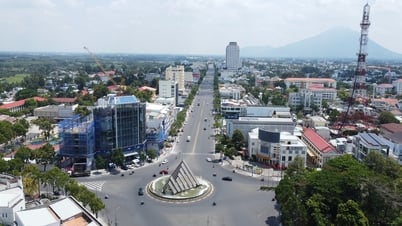According to foreign exchange company Travelex, Chinese tourists are increasingly moving away from traditional destinations such as the US and Europe to the Middle East, Southeast Asia or Latin America.
Travelex data shows a marked shift in Chinese customers' demand for currency exchange since 2019, as US dollars, euros and pounds have become less popular.
“Overall, the US accounted for about 27% of our volume in 2019. Now it’s down to about 17%,” Cameron Hume, global director at Travelex in Shanghai, told the Hong Kong newspaper SCMP .

Chinese tourists increasingly stay away from Europe and the US
PHOTO: SCMP
The trend is driven by changing travel preferences among Chinese tourists, which are in turn driven by policy changes made by Beijing, Hume explains.
China has built closer ties with countries across the Middle East and Latin America in recent years and has agreed visa exemptions with a range of countries including Japan, Singapore, Thailand and Malaysia.
As a result, the US dollar exchange rate has “dropped quite a bit compared to before,” especially considering that Chinese tourists use US dollars not only in the US but also in other countries like Cambodia and Laos.
Chinese tourists also appear to be losing interest in the UK and Europe. Exchanges involving pounds and euros accounted for 12% of Travelex China’s business in 2019, but that fell to around 7% last year.
Meanwhile, the growing “close political ties” between China and the Gulf states have led to a “huge increase” in demand for the currencies of Saudi Arabia, the United Arab Emirates, Oman and Bahrain.
Demand for Southeast Asian currencies has also increased, with a significant increase in trips to Thailand, Malaysia and Singapore “likely due to visas,” Hume said. Japan is also a strong market for Travelex due to the weak yen.
Travelex China has started offering currencies from several Latin American countries in recent years, and demand for currencies from Mexico, Peru and Brazil is “now seeing triple-digit growth”.
Travelex expects China's outbound tourism market to grow strongly over the rest of the decade, with the number of outbound tourists rising to 200 million by 2030 from 150 million in 2019.
“We see RMB outside of China accounting for about 10 percent of our global retail volume. Right now it’s probably 4 percent, but it’s still growing and it’s clearly closely related to Chinese outbound tourism,” he added.
China's domestic tourism market is also undergoing changes, with Hong Kong becoming a "very big market" for the mainland. Many mainland Chinese come to Hong Kong for shopping and tourism, including day trips.
Source: https://thanhnien.vn/ly-do-du-khach-trung-quoc-che-my-va-chau-au-18525030808272431.htm



![[Photo] Journalists moved to tears at the Memorial Service for the soldiers who died in Gac Ma](https://vphoto.vietnam.vn/thumb/1200x675/vietnam/resource/IMAGE/2025/5/30/9454613a55c54c16bf8c0efa51883456)
![[Photo] A delegation of 100 journalists from the Vietnam Journalists Association visits the soldiers and people of Truong Sa island district.](https://vphoto.vietnam.vn/thumb/1200x675/vietnam/resource/IMAGE/2025/5/30/0984a986227d4e988177f560d2e1563e)
![[Photo] General Secretary To Lam receives Chief of the Central Office of the Lao People's Revolutionary Party](https://vphoto.vietnam.vn/thumb/1200x675/vietnam/resource/IMAGE/2025/5/30/140435f4b39d4599a3d17975dfb444c5)
![[Photo] National Conference "100 years of Vietnamese Revolutionary Press accompanying the glorious cause of the Party and the nation"](https://vphoto.vietnam.vn/thumb/1200x675/vietnam/resource/IMAGE/2025/5/30/1cf6cd5c8a934ebfa347028dcb08358c)






















































































Comment (0)